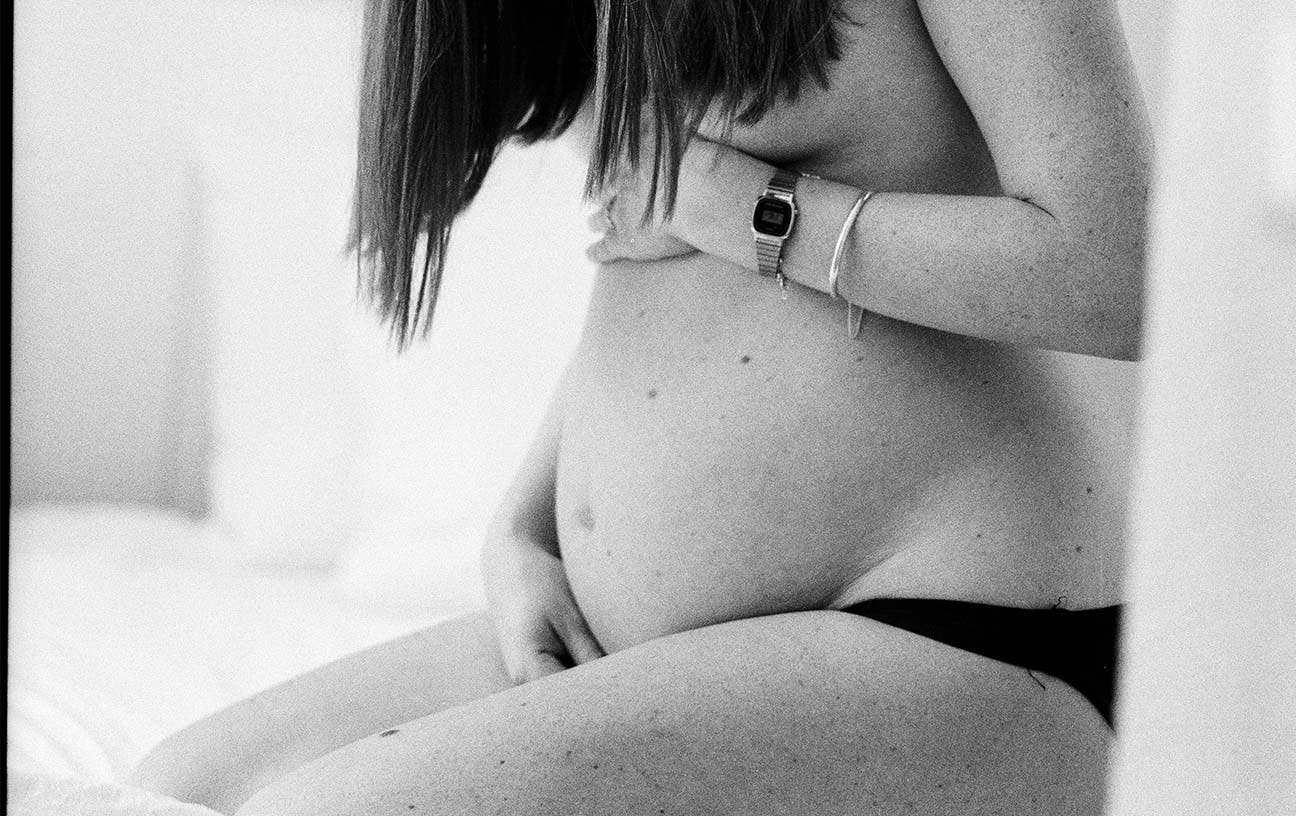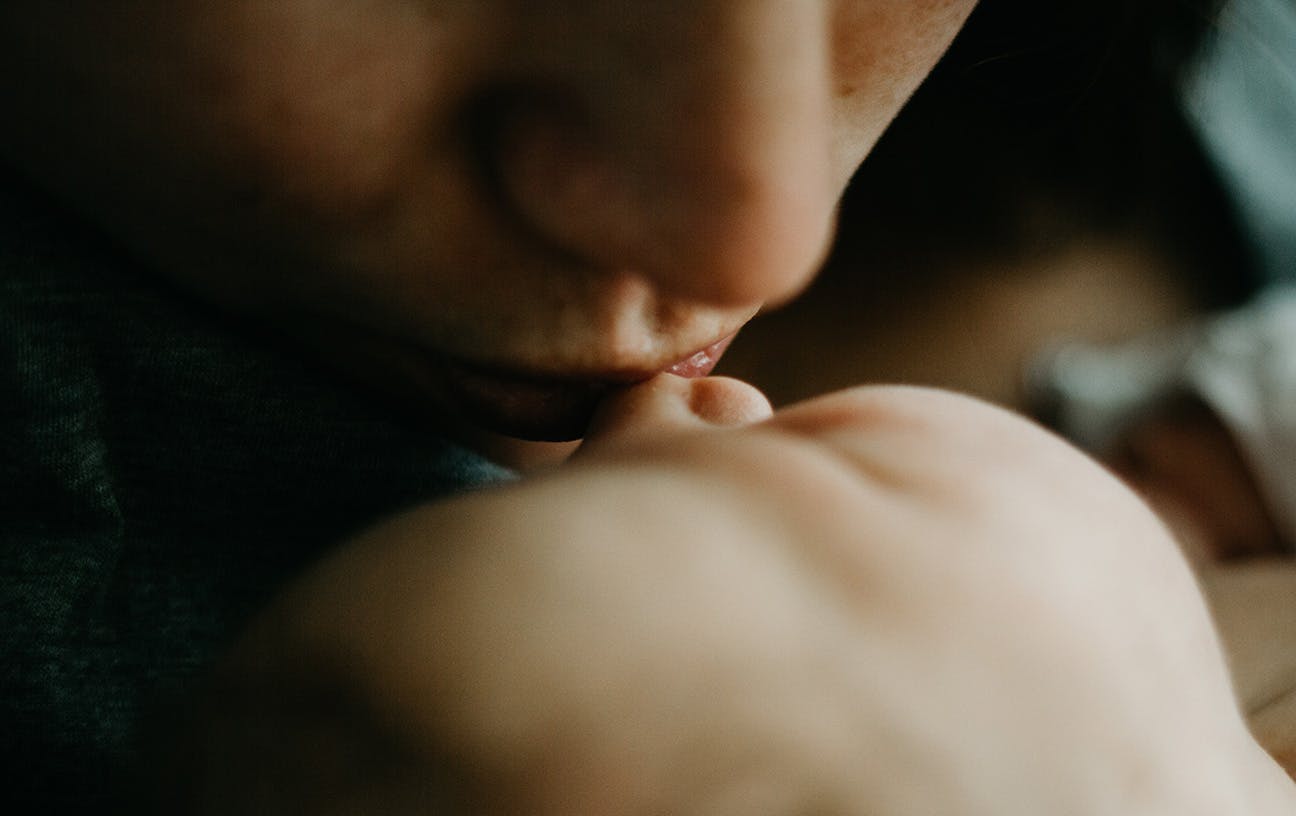0 minute read
The Fourth Trimester
The birth of a baby is also the birth of a mother - raw, bruised, learning their way through a new identity while bearing the physical and emotional scars of childbirth. Jess Rosenberg shares an honest account of what those first few months, often called the Fourth Trimester, of motherhood look like for many, and how it inspired her reproductive health brand moode.
Published: January 2023
Origin: Australia
Sonny was born quick and fast, just five hours after I was induced.
I’d spent the week before in hospital monitoring late onset preeclampsia, and my induction was a ‘when’ and not ‘if’. I was 29 years old, 37 weeks pregnant, and fresh out of a Calm Birth course. Still, I wasn’t ready for him to come so soon.
The birth felt primal and I groaned him out, pulling him from inside me straight onto my chest.
I didn’t notice the fuss and flurry of quick obstetric work at the gaping hole he came out of. I was too caught up in a mess of shock and love and adrenaline. And of course, the postpartum shakes (it’s a thing).

I’d spent a lot of time imagining the birth. But I hadn’t given a second thought to the afterbirth. And despite the strong effects of Oxytocin, this drug-free labour meant I inevitably felt every slice, scrape, prick, tug and stitch put me back together after my episiotomy. It was more uncomfortable than the birth itself.
Weak and woozy, I was placed in a wheelchair and carted off for recovery while my baby was sent straight to special care for some extra love.
I was hormonally high and completely in awe of my body, but I felt naked without my son connected to me. He returned not long after, as did feeling to areas of my body. The pain was deep and immense. My insides felt like they were crumbling.
I didn’t heal quickly. Everything ached. I couldn’t sit up for weeks and I had anxiety about rolling over. I wondered how women managed to walk after birth, sit while they breastfed, lay down while they tried to sleep — and somehow still looked so peaceful and serene!
My skin and muscles were sensitive to any touch or movement. I thought it was normal, so I didn’t mention it. I just stopped every couple of metres when I walked, and sat on the edge of chairs on half a bum cheek. I smiled at everyone.
I didn’t think anyone wanted to know my insides felt like they’d shattered.
No one really spoke of these things, so I didn’t either.
After six weeks, I attended my routine postpartum health check. Following a thorough once-over, my doctor informed me I had developed a thick layer of scar tissue over my episiotomy wound.
This granulation tissue was not meant to be there, and needed to come off. He recommended we look further into it.
He also gave me the go ahead to have sex again, and stuffed my fist full of prescriptions for the mini pill. The absolute last thing on my mind.
The rest of my fourth trimester became a blur of doctor’s appointments to correct the scar tissue, and dismissal of the pain and discomfort that ensued. I lost count of the amount of times I was told what I was experiencing was completely normal, and how I should push through sex until it’s comfortable again.
I developed Vaginismus and Vulvodynia — both bread and butter conditions treated by pelvic floor physios every single day. As I had no idea what was normal and my discomfort not holistically explored by my health practitioner, these weren’t diagnosed until 18 months postpartum.
The simplicity of what was required to treat it still haunts me because my postpartum would have been a whole lot more comfortable had I been referred on to a pelvic floor physio in my early days of recovery.
I found myself pregnant again two years later, and had more questions about postpartum than I did about pregnancy.
Fertility conversations have always been centred around optimal health for the baby, but nobody seemed to be talking about what happens to the woman before, during and after birth. Why were we left out of the picture?

Once I realised this, I could’t unsee that maternal health in the reproductive health sphere is often dismissed. And this encourages women to stay silent on all things major and concerning in regards to our health.
At its core, moode is a new voice in reproductive health, challenging the mainstream approach.
We’re a community unpacking all of the things we don’t know that we don’t actually know. When should I freeze my eggs? What does miscarriage look like? What should I actually expect before expecting?
We’re arming women with reproductive health knowledge, before these experiences happen to a lot of us.
Moode makes nutritionally-formulated vitamins, hosts uncomfortable conversations, and provides maternal health education for wherever you are on the reproductive journey.
Given our inspiration, we’ll always be more than a vitamin brand.
By Jess Rosenberg
Image credit: Moode, supplied
Discover Moode
"When I entered motherhood, it was a confusing mess of postpartum pain. I presumed it was normal. Luckily, I got to do it again and again, each time entering the arena with more knowledge than the time before. By my third birth, I was excited for the postpartum era. But that first time experience of dismissed pain and a lack of awareness inspired my brand baby, moode. Much more than a vitamin company, we’re a growing community of women taking control of our reproductive health."
Jess Rosenberg
Share